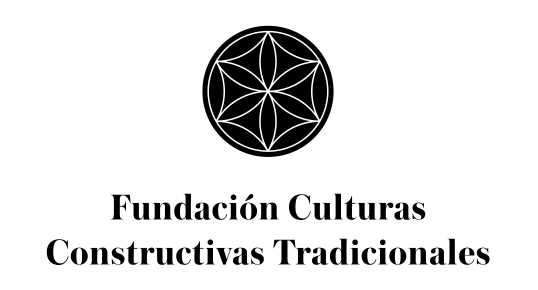Rafael Manzano Prize for New Traditional Architecture
Presentation



Prize for Traditional Architecture
The Rafael Manzano Prize for New Traditional Architecture is intended to disseminate the value of traditional architecture as a benchmark for the architecture of our time. Since 2012 it has served to recognise careers that have been outstanding in this field in Spain and Portugal, contributing especially to the continuation of traditional architecture, both in the restoration of architectural and urban heritage and in the building of new work which, based on local tradition, is able to blend harmoniously into such ensembles.
It was first awarded in 2012 in a ceremony held at the Real Academia de Bellas Artes de San Fernando (Madrid). In 2017, thanks to the collaboration of the Fundação Serra Henriques and the Ordem dos Arquitectos, and with the high patronage of His Excellency the President of the Portuguese Republic, the prize was extended to Portugal, being granted to practitioners in either of the two countries. Till 2021 it has been held each year and it will be biannual going forward.
Who is it organized by?
It is organised by the Traditional Building Cultures Foundation, with the collaboration of INTBAU Spain, INTBAU Portugal, Kalam, the Fundação Serra Henriques, the Real Academia de Bellas Artes de San Fernando and the Ordem dos Arquitetos, and with the high patronage of His Excellency the President of the Portuguese Republic. All that thanks to Richard H. Driehaus.
Who is it addressed to?
This award does not intend to honor the architects whose works best represent the latest architectural trends, or those whose interventions involve avant-garde transformations of our heritage; on the contrary, it is addressed to those architects whose work has contributed to the preservation, continuation and adaptation to contemporary needs of the building, architectural and urban traditions which define the identity of the places where they were built.
Thus, they are practitioners who, instead of seeking notoriety and novelty through their works, play an important role which is not sufficiently honored because the results, often remain unnoticed, precisely due to their evident continuity with the past.
For what purpose?
This award is trying to correct this situation in both countries, honoring those who have been developing this kind of work, and helping to promote a better practice in the preservation works of our architectural and landscape heritage, while its particular traditional identity is more threatened than ever because of the progressive homogenization it is suffering.
The award
The winner is awarded a €50,000 prize and a commemorative plaque, thanks to the generosity of the American philanthropist Richard H. Driehaus.
Rafael Manzano Martos

Rafael Manzano
The award is named after the architect Rafael Manzano Martos, who has devoted his practice to the preservation of the Spanish architectural and urban heritage both through restoration works and designing new architectures based on this heritage, what lead him to win the international 2010 Richard H. Driehaus Prize, becoming the first and by now the only Spanish architect having received this award.
Laureates since 2012

In the first edition the jury awarded the architect Leopoldo Gil Cornet for his restoration works at the Real Colegiata de Roncesvalles (Navarre), which were developed from 1982 to 2012. In these works, during his almost thirty years of interventions, the winner was confronting and successfully solving a wide variety of problems, recovering so the lost vitality of this ensemble as well as of its surrounding area, while contributing to the sustainable development of the region and playing an important social role.

In 2013, the Second Rafael Manzano Prize was awarded to Ignacio de Medina y Fernandez de Cordoba, Duke of Segorbe, and the architect Luis Fernando Gomez-Stern for their restoration works in the huge complex of domestic buildings known today as Casas de la Judería, in Seville. This was possible thanks to a personal initiative of Ignacio Medina, who was gradually purchasing and restoring as many houses as it was possible to save in a previously very degraded neighborhood, which had been abandoned by the responsible authorities. Both humble and noble houses were restored with equal rigor, studying and recovering traditional forms and finishes. Thus a characteristic neighborhood of Seville’s historic center, crucial to understand the true identity of this city, was revitalized and its inherent beauty was recovered.

The Rafael Manzano Prize in 2014 was given to the architects from Bilbao Javier Cenicacelaya and Inigo Saloña for their work both in new buildings and restorations, being always respectful of local landscape and the architectural traditions of the places where they have practiced. During the last decades they have also defended classical and vernacular architecture through multiple lectures, exhibitions and publications.

Donald Gray was awarded the prize for his lifetime of work lending continuity to Spain’s architectural traditions, and for his constant efforts to integrate them into contemporaneous practises, to keep them alive not just by preserving existing urban ensembles, but also by using them as a reference to create other new buildings. Gray began working in the Costa del Sol when it was still a veritable natural paradise, proposing an elegant alternative to the unsustainable urban planning generally being adopted to meet mass tourist demand. He also worked to restore the crafts which had formed the region’s architectures, with his work in charge of the Lebrija Crafts School standing out in this regard. Settled later on in La Alpujarra, in Granada, Gray continued working from there till the very last day to preserve the unique identity and beauty of the towns of this region.

The fifth Rafael Manzano Prize was awarded to Enrique Nuere, who has not only stood out for his magnificent work restoring traditional roofs and ceilings and designing new ones, but also for having made possible, thanks to his research, to recover the body of knowledge of a craft whose details, encoded before being forgotten, no one could figure out. He has also revitalized this craft through teaching, research and his very practice. Thanks to him, today there are numerous experts and craftsmen who deal with this traditional art following the principles he rediscovered and actively disseminated.

The sixth Rafael Manzano Prize, which in 2017 was extended to include works done in Portugal, was awarded to the Portuguese architect José Baganha. His trajectory demonstrates a firm will to preserve and provide continuity within the architectural traditions of the regions in which he has worked, as well as updating these traditions and always seeking to adapt them to the requirements of our time. The entirety of his work is a model of attention and respect for its context, whether it be more urban and classic, or more rural and vernacular. In this sense, his studies on the traditional architecture from the Alentejo region should be emphasized, which have been based on his many projects built in that area, both contemporary and respectful of local identity and culture.

Juan de Dios de la Hoz was awarded with the Rafael Manzano Prize for New Traditional Architecture 2018 for his mastery of the traditional and historical forms and techniques, which he has exhibited in many of his interventions related to historical heritage. Especially significant is the case of those monuments which, having been found in a state of complete ruin, have required important works on his behalf to reconstruct them. Among these works we should highlight the ones carried out in Lorca, reconstructing the main rundown or damaged buildings within the city which were left in this state due to the earthquake which affected the area in 2011.

The VIII Rafael Manzano Prize for New Traditional Architecture has been awarded to the Portuguese architects Antonio María Braga and Alberto Castro Nunes who have become of remarkable importance in the field of implementing Portuguese architectural traditions, both in terms of the development of new buildings – classical and vernacular – largely commissioned by different public administrations, and the works on pre-existing buildings. When carrying out this work, their strong commitment to natural materials and traditional construction crafts is clear. They aim for their works to be characterized by their durability, sustainability and beauty. Generally speaking, they are works of a small-sized scale, or fragmented into elements capable of retrieving it. They are able to heal the urban fabrics in which they are inserted, retrieving their balance with the local nature and culture.

The IX Rafael Manzano Prize for New Traditional Architecture has been awarded to Fernando Martín Sanjuán, whose work, spread throughout Ecija, includes both the restoration of landmark buildings, such as the monumental 18th century palaces of the city, and modest new houses simply designed to be lived-in, but imbued with the particular character of the town: heights, textures, materials, the composition of openings and façades… These houses fill existing gaps in the urban fabric, giving continuity to its streets and squares in an exemplary and discreet manner.

The 10th Rafael Manzano New Traditional Architecture Prize has been awarded to Sergi Bastidas, who has worked chiefly in Mallorca, in both new building and renovation, seeking always to use traditional materials and techniques. He also has a particular interest in integrating into his buildings the identity of the place to which they belong. The buildings he designs seem to merge with their setting thanks to his attention to local terrain, climate, materials and building traditions, the ways in which the place has been used traditionally and its vegetation and landscape. Hence he is a great advocate of more natural and sustainable materials, which also give his work warmth and humanity: stone, lime, wood, cane, etc.

The 11th Rafael Manzano Prize for New Traditional Architecture has been awarded to Luis Rebelo de Andrade, a Portuguese architect with a long record in the design of newly built and refurbishment projects, always with a particular concern for integration with the identity of the local buildings and landscape. Thanks to his large knowledge of local materials, vernacular building traditions and each region’s history, his work blends harmoniously with its built and natural environment. In his professional practice he is notable for his commitment to the creation of an architecture that is not just functional but also reflects the essence and the less tangible values of the places where he works.












